 by: Ruhullah Kazemi, Doctor of Philosophy (Ph.D.) Islamic Studies
by: Ruhullah Kazemi, Doctor of Philosophy (Ph.D.) Islamic Studies
Translated By: Mohammad sakhi Rezaie
Introduction
Insidiousness and cunning, like the one that caught Sudabah and was finally killed by Rostam (Shahnamah Ferdowsi), or rebellion against oppression, like what Azada, a Roman maid, did against Bahram, and was immediately killed (ibid), or the love that represents the lover only in death, like Shirin’s suicide on the coffin of Khosrow, or the virgin women who bring a Shahrbaz to Jouissance every night; but in the morning, the blood of virginity and a pious woman who is subdued by sexual desire and is finally stoned to death (one thousand and one nights), or women who were killed because of baseless accusations, like stoning of Farkhonda and burning her alive on the bed of Kabul river by the opiate-wild gangs, and thousands other evidence, it doesn’t matter if they crawled from realty to literature or from literature to reality, They are considered to be a specific thing that the category of “femicide” can be falsified and applied to.
Again, these examples show individual strains of “femicide”; However, women and children have been subjected to violence, murder, rape and slavery in groups in secular wars and religious conquests. In the religious conquests in the first centuries of Islam, there were many cases of captivity, slavery, killing of women and children and sexual exploitation of them in different lands of Islam, such as Egypt, North Africa, Maghreb, Transoxian and Sindh, etc. – except for the countries that surrendered. And they paid jizya – it can be seen. Of course, the understanding and analysis of such ratios as the biological world of women,relies on a set of relationships that have a theological appearance and can be called “the metaphysics of women’s life” in Islam. These relationships are mentioned both in the original texts and later in the lives of the caliphs.
I don’t intend to discuss such examples in the course of History of Islam, but would like to provide an example which not only in terms of quantity is much more than what has been reported during the Islamic conquests, but according to Kateb Hazara, in terms of quality of catastrophe is deeper than those: The fate of Hazaras women and children in Abud Rahman Khan. War on Hazaras. In addition to metaphysics of Hazaras women, Ideological and racial severity are what make the fate of Hazaras women and children unique than other examples. In addition to the principles that are called the metaphysics of women’s life, the intensity of the ideology of racism is against them. As such, first, we would review the naked body of reality and then would into interaction of religious and racial ideology against Hazaras.
Racial Sadism
The reports that we will read, from a psychological point of view, show a kind of excessive and unrestrained sadism that is not only intensified by the hatred that it carries inside; But he has also made hatred and cruelty so acute and blind that he has completely drowned the person in the ruined womb of a clinical psychotic disease. Therefore, as much as the concepts and words used in the ruling discourse of the historical political system are read, they can be considered symptoms of psychosis and illness, a kind of madness that covers the collective psyche of a population, no less important than that. However, the reports should be read in such a perspective.
Contemporary historians have written that one of the main reasons for the uprising of the Uruzgan people against the government of Abdul Rahman Khan was the violation of the honor of the Hazara people by the military and civil servants of the government (Farhang, 1371, Vol. 1: 401). After settling in Uruzgan, the Amir’s army takes over the sons and daughters of the people, regardless of any conviction or conscience, with coercion and reluctance. Not only that, they rape married women. In this way, people find themselves forced to rise and revolt (Ghabar, 2010, Vol. 2: 487)
Another historian writes:
“The true cause of the Hazarajat uprising was that Sardar Abd al-Qudus Khan forced some of the daughters of Hazara Amirs and nobles into sexual intercourse, and the Afaghan army became bold because of this act of its ruler and commander, and because of that Sunni hatred and bigotry and obstinacy With the Shiite congregation, they started assaulting women and girls and even against Hazara boys, and this behavior increased day by day for a year. Apart from the fact that Abdul Qudous Khan did not solve or eliminate these issues, he himself spent more time on the issue of corruption than others. Finally, the barbarians got fed up with life, preferred death over life, disarmed the Afghan forces and rose against Abdul Qudous Khan” (Farrukh, 1371: 403).
These aggressions certainly torment the souls of the Hazaras, but the spark that ignites this fire is the story of Gul Begum nicknamed Shirinjan, the daughter of one of the Hazara leaders, who was violently exposed by one of the officers of the Amir. With the publication of this news, the Uprising of the Hazaras takes a public form, even the leaders who until then worked for the Amir in the way of reconciliation, such as Mir Azim Beig of Shahristan, join the ranks of the fighters against the government (Farhang, 1371, Vol. 1: 401).
According to the narration of the Kateb in Siraj al-Tawarikh, three soldiers entered the house of a man who had a beautiful wife in Palan valley of Uruzgan, under the pretext of looking for a gun, and tied the man’s hands and feet tightly and committed illegal acts with his wife. The man’s brother, who became aware, informed some of the oppressed Hazaras of people in pain. They made a pact among themselves and said that it is better to die a hundred times in this life than to see an illegal act with our eyes, but because of impudence, we should wait and not prevent it. They killed those three soldiers. When the people of Darra Palan learned about this incident, they were afraid and believed that government forces would attack them, while they had no weapons to defend themselves; At night, they attacked the armory fort in the center of Uruzgan; They killed all the guards of the armory and took all the weapons that were in the castle (Kateb, 1391, Vol.3, B1: 884 and 885). In the morning, four thousand government troops attacked the fort and a fierce battle took place. When the people of Uruzgan found out, they took themselves to the armory fort and after that the war became general. In this context, Dowlatabadi quotes Faiz Mohammad Kateb and writes: “Although they had accepted defeat against the Amir of Kabul without any great resistance, their army continued to commit many crimes under the pretext of collecting weapons and taxes, so that the sighs and cries of the oppressed has passed the ninth sky. Many people were killed, many women, girls and even boys were raped. This people (Hazaras) were abused so much that the pen cannot express it” (Dowlatabadi, 2004: 58).
The British physician John Alfred Gray, the personal physician of Amir Abdul Rahman Khan, narrates his observations as follows: “Recently in Kabul, seeing a group of Hazara women with bare faces and dirty clothes being passed by a group of soldiers with bayonets become normal. As the war progressed, they became so numerous that His Majesty often rewarded a loyal servant or officer by giving him one or more of the additions to his harem” (Alfred Gary, 1901: 213). Later, this brutality with Hazara slaves turned into a normal social business that was taxed. Some have written: “The government levied a tax of 70,000 rupees on the Hazara slave trade in Kandahar alone” (Kakar, 1973: 9). It should not be forgotten that the Amir’s government levied a 10% tax on the Hazara slave trade. Dawlatabadi continues, quoting Faiz Muhammad Katab, in this context: “Qazi Khaja Muhammad Khan sent the amount of 1941.5 rupees to the Amir of Kabul in the end of 1895, only for the tax collected from the trade of Hazara slaves and concubines in Uruzgan. This amount is about 15-20 rupees for each slave or maidservant (Dolatabadi, 1384: 114). Let’s note that imposing a tax on the sale of Hazara slaves was only one type of tax that was imposed on Hazaras. Other types of taxes were oil tax, millet tree tax, livestock tax, grain tax and also the tax that was received every year under general revenue in cash/money.
Timur Khanov narrated this approach as follows: Emir of Kabul forced at least 8000 Hazara women to work as slaves in Kabul and its surroundings (Timur Timurkhanov narrated this approach as follows: Emir of Kabul forced at least 8000 Hazara women to work as slaves in Kabul and its surroundings (Timurkhanov, 1980: 172). The late Khateb Hazare, however, writes about aggression in different places of Siraj al-Tawarikh. Among other things, he mentions the rape of one of the officers of the Kabul Cavalry on the wife of one of the emirs of Darband Hazara, who was easily released after being caught, and this issue horrifies the Hazaras (Kateb Hazara, 2011, vol.3, B1: 822).
khanov, 1980: 172). The late Kateb Hazara, however, writes about aggression in different places of Siraj al-Tawarikh. Among other things, he mentions the rape of one of the officers of the Kabul Cavalry on the wife of one of the imprisoned Amirs of Hazaras, who was easily released after being caught, and this issue horrifies the Hazaras (Kateb Hazara, 2011, vol.3, B1: 822). It has also been reported that when Mir Mohammad Reza Big, one of Hazara’s great leaders, went to Kabul with some of his nobles and followers hoping to be rewarded for his cooperation and good service with Abdul Rahman’s government, he was arrested and imprisoned, contrary to his expectations. And all the children and his family were also taken to Kabul and imprisoned. Other colleagues and supporters of the government who came to Kabul were imprisoned and executed with their families (Kateb Hazara, 1372: 344-345).
Abdul Rahman’s troops sexually assaulted Hazara women and girls on a large scale (Farhang, 2010: 402). The Amir sent orders to all the commanders to take any number of Hazara women and girls they could as slaves through booty, on the condition that they pay khums (one fifth) to the government (Kateb, 2013, Vol. 3, B1: 996). Excommunication of the Hazaras and numerous decrees condemning them had legitimized and legalized widespread sexual assaults on the women and children of the Hazaras, which had turned into an arbitrary social process.
Therefore, thousands of women and girls were raped as slaves, and commanders of the emir, such as Abdul Qudous Khan and other leaders of his army, built harems with the help of Hazara girls and women. Abdul Rahman not only does not prevent this unbridled and naked aggression; Rather, in a letter, he asks Abdul Qudous Khan to send him some of the beautiful girls of Hazara (Kateb, 1393, vol.3, b1, 841 and 889). In this way, “Amir chose fifty beautiful girls as bondswomen for himself and the princes (Farhang, 1380: 402). Sexual assault on married women of Uruzgan’s Hazaras caused them to rise again against the government (Kateb, Vol.3, B1: 887-888). To study examples of this horrific sexual assault, refer to the following sources: (Kakar, 1973, P 5, quoted by Mousavi, 2010: 168; Poladi, 2008, 365, 392-395; Mehdi Farah, 1371: 403 and Riazi Herawi, Beta, 3rd edition: 260).
According to the narration of Katib Hazara, Abdul Rahman, based on the decree of open lands of Al-Anouh, hands over the lands of Hazaras and Qazalbashan residents of Chora to the people of Achekzai and Barakzai. The frequent petitions and protests of the Qazalbashan make the Amir to order the Hazaras of Chora to pay the price of their lands. These plundered Hazara people were forced to sell their wives, daughters and sons to pay the price of their land (Kateb 2013, Vol. 3, B2: 956)
Also, the aggressors were given Sharia permission to rape the women and girls of these people as much as they can and through forced pregnancy in the patriarchal society of Afghanistan, disrupt the population structure in the country for the benefit of the aggressors; Because from the point of view of jurisprudence, a person can sleep with thousands of mamluk slave girls without any restrictions and without their permission. The same advice was offered by Mawlawi Abdul Rauf Kakai to Amir Habibullah Khan (Molaei, 2010, Volume 3: 193). According to the estimate of the representative of the British government, from July 1892 to June 1894, about 9 thousand Hazara people were sold as slaves in Kabul market alone (Farhang, 2010: 403). While a large number of others were bought and sold in other cities of the country until 1920 (Poladi, 2008: 403).
With this permit, thousands of Hazara women and girls were sold as slaves (Kateb, 2013, Vol. 3, B2: 212) and there was no house left in Afghanistan unless one or two Hazara women were taken into slavery, even the nomads transferred and sold them to India and other foreign countries (Kateb, 2013, Vol. 3, B2: 955)
Rape against Hazara women started with Abdur Rahman, his sons and his courtiers and reached the lowest classes (Molaei, 2013, Introduction to the volume 3 of Siraj al-Tawarikh: 188). The most beautiful ones were kept in the royal court, in the personal harem of the Amir. The names of some of the daughters of Hazara nobles who were abused and raped by Abdur Rahman Khan, Habibullah Khan, Sardar Nasrullah Khan and their agents, as well as the names of their children, have been recorded in Siraj al-Tawarikh (Kateb, 2011, Vol. 4, B3: 612) Moulai, 2011, introduction to vol. 3, Siraj al-Tawarikh: 189; the same, vol. 4, B1: 265 and also: Vol. 4, B1: 501). On the day of his murder, Habibullah Khan had nearly 200 girls from different ethnic groups whom he sexually abused (Kateb, 1390, Vol. 4, B2: 390).
Abdul Rahman’s army was looking for the beautiful girls and women of Hazara prisoners, and as mentioned, some of their leaders had private harems and married women were not safe from their repeated rapes (Kateb, 2013, Vol. 3, B1: 841 and 889). 3, B2, 171; C3, B2: 78)
Mirza Gholam Haidar, a Jaghuri agent, wanted one virgin girl from the Jaghuri people every month, and after raping eight girls in eight months, the Jaghuri people complained to Abdur Rahman, an emir who had a harem himself (Kateb, 2013, Vol.3, B2: 826, and for further reading see: Kateb, 1393, Vol. 3, B2: 322; Vol. 3, B2: 213; Vol. 3, B2: 215; Vol. 3, B2: 212; 1390, Vol. 4, B1: 144; Vol. 3, B2 : 437; Poladi, 1387: 392-395). As a result of sexual assault on Hazara women and girls, a new generation called “Afghan-Hazara” was formed, which changed the ethnic identity of these children in the patriarchal society of Afghanistan (Taimur Khanov, 2012: 273).
In another story, we read that Sardar Abd al-Qudus Khan, the commander-in-chief of the government forces in Uruzgan, took forty-five of the daughters of Hazara nobles, who were distinguished by virtue and beauty, by force and without the consent of their parents and relatives, as female salves, wives and servants, and lived in pleasure. The other officers of the army also followed their leader and leader, each of them had one or two Hazara girls as wives and servants by their side and enjoyed themselves (Kateb, 1391, Vol.3, B1: 838 and 886). In the book “Afghanistan Events”, the late Katb mentioned: “Abdul Qudous Khan himself took the oath of servitude to sixty girls, as well as the remaining officers and leaders, five to five and ten women and girls” (Kateb, 1372, Vol. 3, B1: 243)
At the end of the war, Amir Abd al-Rahman Khan also chose fifty beautiful girls as female slaves for himself and the princes, and made the young sons of Hazara leaders as slaves as part of the court staff” (Farhang, 1992, vol. 1: 402).
Katib Hazare writes about the atrocities committed by Abdul Rahman Khan’s troops while collecting weapons: “Many women and girls and had their veils of honor torn… They even put the cat in the women’s underwear and burned their breasts and buttocks with fire to show the weapon” (Kateb, 1372, Vol. 3, B1: 245). And…
Metaphysics of woman’s life
In Islamic culture, women are clearly defined under three basic categories: 1- as privy parts, 2- as a field/producer and 3- as property/ownership. A woman has never been defined in the field of social and public descent; Except for the oddities that cannot make rules. What is mentioned in the Qur’an, especially in Surah Noor, shows the development of the above-mentioned binding framework and sides, which are all located outside the public domain. In addition to the dominance of this framework on the lives of millennial women, other aspects are added to their lives in the 20th century: 1- being a non-believer and 2- being a Hazara ethnic member. The predominance and interaction of these five categories made Hazara women a complete object of lust, rape and slavery. Although the captivity and rape of women have always been used in wars and conquests as a means of humiliating the enemy and a means of subjugating him, but with the quantity, quality, significance and relativeness that is applied to Hazara women in the 20th century of Afghanistan, there are few examples in the history.
Women who are victimized every day in and by our culture also occur in the context and perspective of the aforementioned metaphysics. In the current situation, women are a spiritual coffin that is hung on the string of racial sadism and religious ideology in a lifeless manner that disappears every time. But there is no emancipatory subject except women themselves, no phallus-oriented expectations can be effective except women’s own activism, and nothing has thrown them out of the private sphere except education. If there is only one providence left in the fate of women, it will be nothing but education. Only “education” can become the essence and center of their activities and lead them to history and politics. It is only education that will turn women into political, social, economic and historical subjects and make them dominate their destiny; But it is exactly the basic tool that has been stolen from them.
Source:
1. Ghobar, Ghulam Muhammad (2010), Afghanistan on the path of history, vol. 2, Tehran, Irfan, first edition.
2. Farrukh, Seyyed Mehdi (2002), Political History of Afghanistan, Qom, Ehsani, first edition.
3. Farhang, Mir Mohammad Sadiq (2002), Afghanistan in the last five centuries, Vol. 1, Ismailian Press Institute, Qom, first edition.
4. 7. Poladi, Hassan (2008), Hazaras, translated by Ali Alami Kermani, Tehran, Irfan Publications, second edition.
5. 9. Farrokh, Seyyed Mehdi (2002), Political History of Afghanistan, Qom, Ehsani Publisher, Ismailian Printing House.
6. 11. Mousavi, Askar (2010), Afghan Millennials (History, Culture, Economy and Politics), translated by Asadullah Shafaei, Tehran, Naqsh Simorgh Art Cultural Institute Publications, first edition.
7. 23. Farhang, Mir Mohammad Sediq (2011), Afghanistan in the last five centuries, Qom, Dar al-Tafsir, Ismailian printing house, first edition.
8. Timur Khanov (1372), Hazara National History, translated by Aziz Tughian, Bija, Ismailian Publications.
9. 7. Poladi, Hassan (1387), Hazaras, translated by Ali Alami Kermani, Tehran, Irfan Publications, second edition.
10. Timur Khanov, L. (1980), History of the Hazara Mongols (Urdu), Quetta.
11. Alfred Gray, John (1901), At the Court of the Amir, London.
12. Dawlatabadi, Basir Ahmad (2004), Revival of Identity, Qom, Iran.
13. Kakar, Hassan (1973), Hazaras of Afghanistan, Paper 4, Afghan Council, Asia Society.


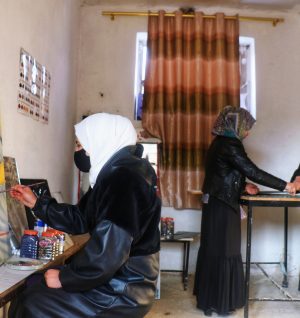
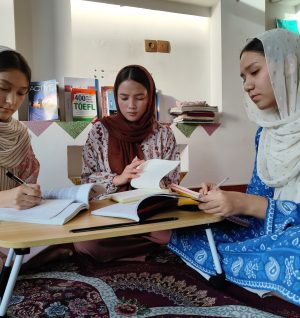
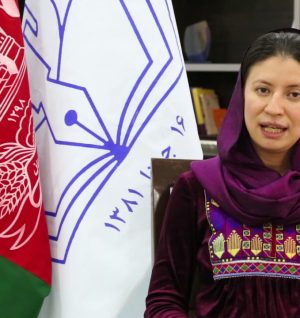

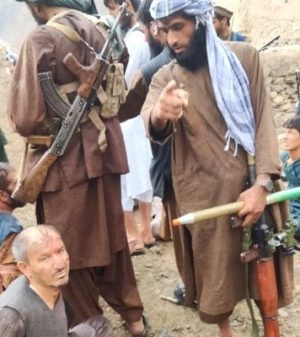
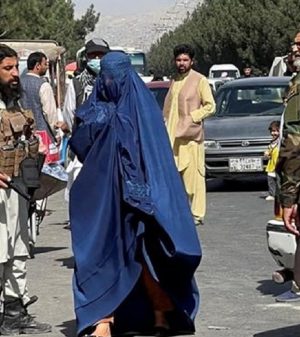
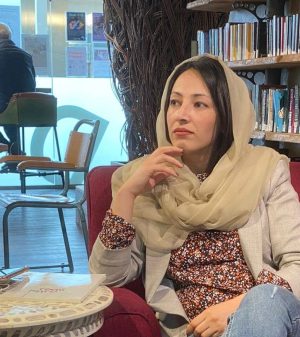
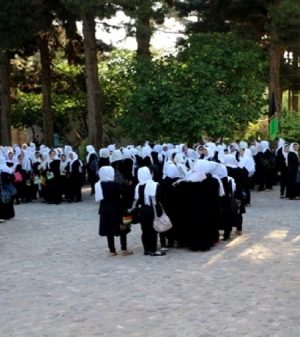
Add Comment